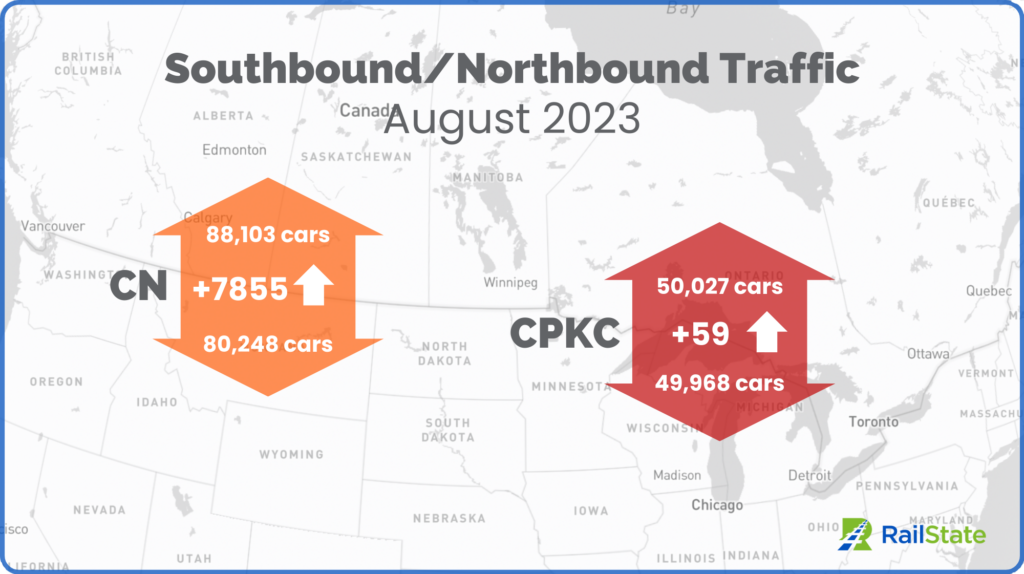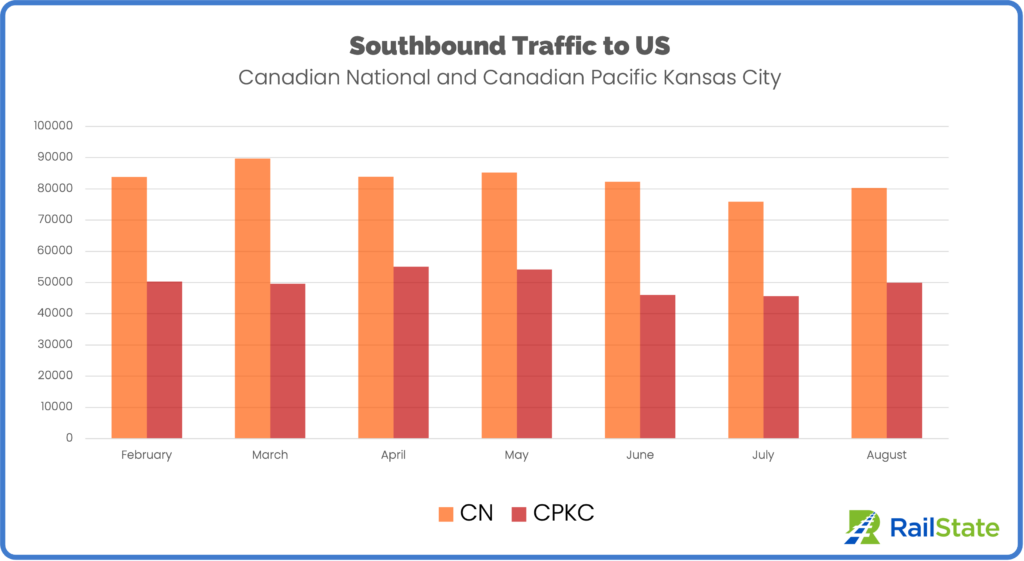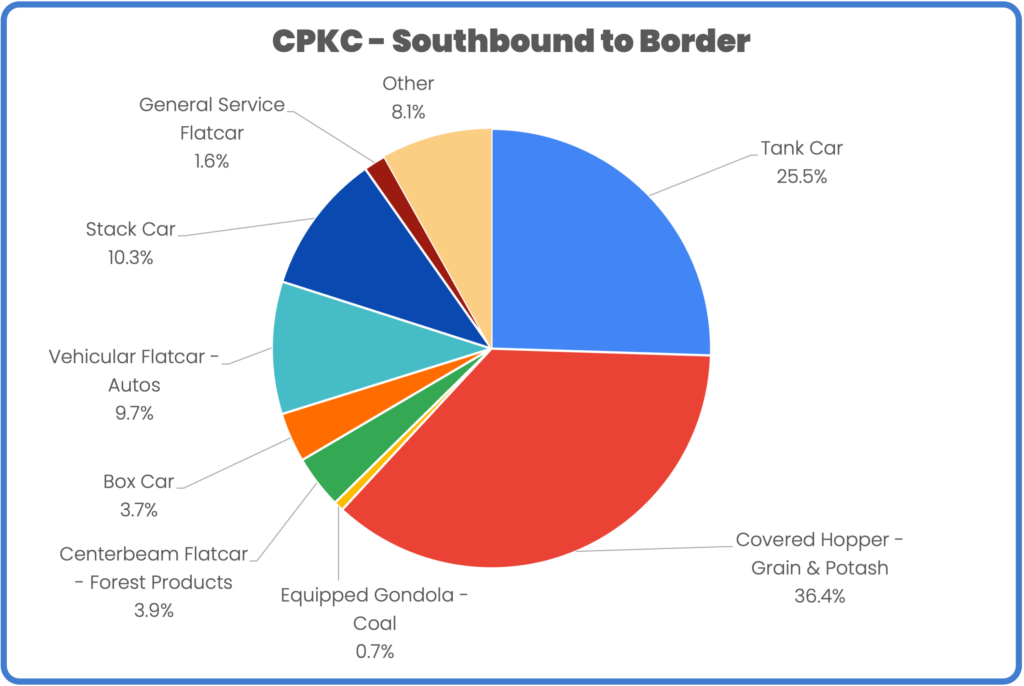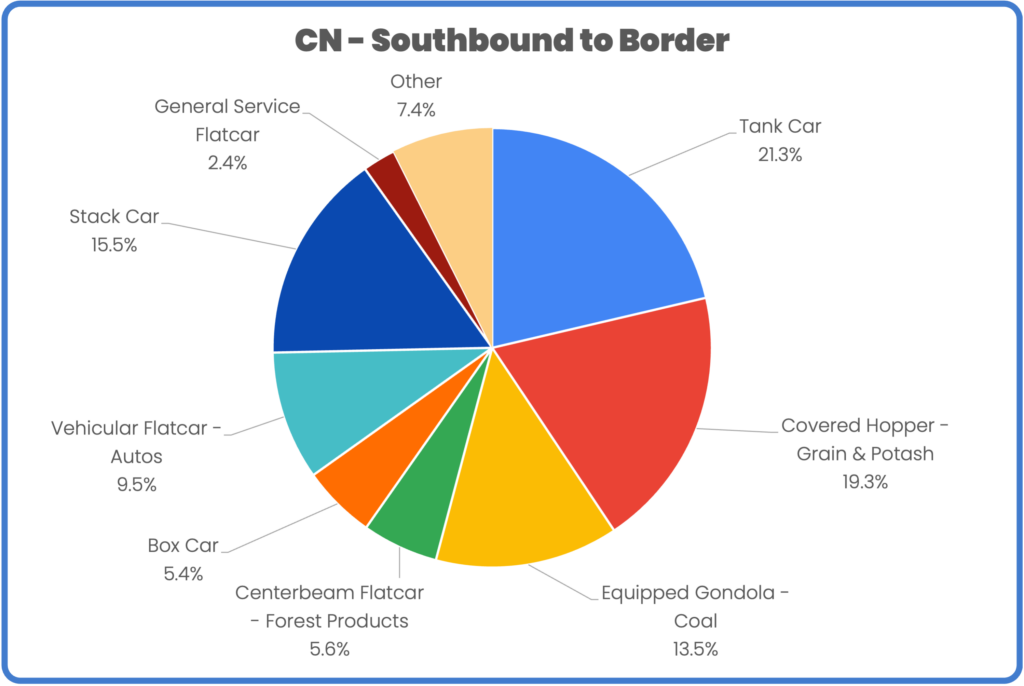Traffic Report: Cross Border, August 2023


RailState independently tracks all freight rail movements across Canada in real-time, including traffic flows through US/Canada border crossings.
Total southbound traffic from Canada in August was 130,216 carloads. This is a 7.1% increase over July. Southbound market share is:
CN | CPKC | |
February | 62.5% | 37.5% |
March | 64.4% | 35.6% |
April | 60.4% | 39.6% |
May | 61.2% | 38.8% |
June | 64.1% | 35.9% |
July | 62.4% | 37.6% |
August | 61.6% | 38.4% |
Period average | 62.4% | 37.6% |
Both CN and CPKC increased southbound traffic in August, with CN growing 5.8% compared to July and CPKC up 9.4%.

Northbound traffic into Canada outpaced southbound traffic in August, with the majority of the difference coming on CN. CPKC showed a near identical balance of flows, with only a 59-carload difference for the month.

The busiest border crossings for CN traffic were Port Huron, MI (42.1% of total CN southbound traffic), Fort Frances, ON/International Falls, MN (34.4%), and Blaine, WA/Vancouver-Seattle (via BNSF) (23.5%).
For CPKC, the busiest crossings were Windsor (31.3% of total CP southbound traffic), North Portal, SK (27.8%), Emerson, MB (14.4%), and Kingsgate, BC (11.9%).
CPKC is heavily weighted toward chemicals and agricultural products. Tanks cars and covered hoppers account for 61.9% of total southbound traffic.

CN moves more coal cars southbound than CPKC. Equipped gondolas account for 13.5% of total southbound traffic. The biggest difference among the carriers is in agricultural cars, with CPKC carrying nearly twice the proportion of covered hoppers than CN (36.4% compared to 19.3%). CN moved a larger proportion of stack cars than CPKC in August (15.5% compared to 10.3%).

Schedule your in-depth demo today to explore how Rail Network Intelligence can unlock insights for your rail supply chain.
Copyright © 2025 RailState LLC